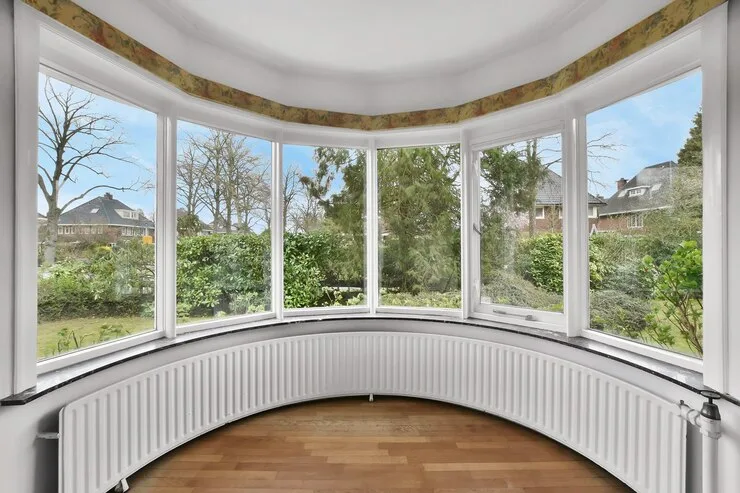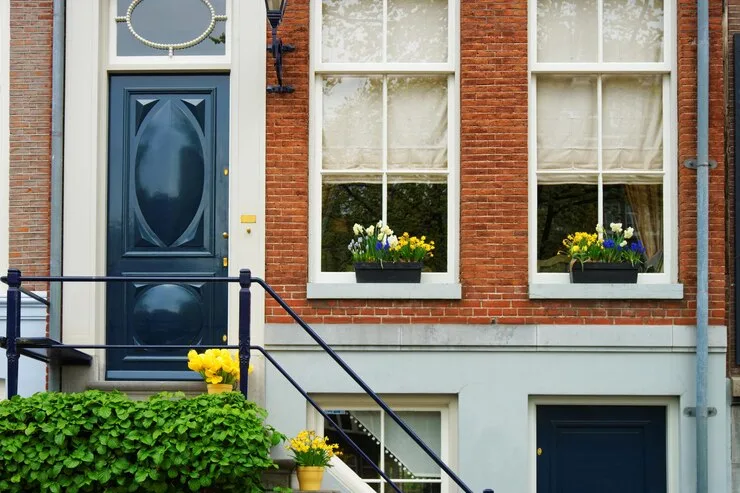
When it comes to enhancing the aesthetic appeal and functionality of your home, the choice of windows plays a crucial role. Bay and bow windows are two popular options that can transform the look and feel of any space. Understanding the differences between these two window styles and their respective advantages will help you make an informed decision for your home.
Differences between Bay and Bow Windows
Bay and bow windows share a unique characteristic: they are both formed by merging several windows to create a curved projection beyond the walls of a home. This design not only enhances the natural light entering the space but also improves airflow. However, the key distinction between the two lies in their structure; bay windows typically consist of three windows, whereas bow windows are made up of four or more windows.
Bay and bow windows may appear similar at first glance, but they have distinct differences that set them apart. A bay window typically consists of three windows, with a large center window flanked by two smaller windows on each side. On the other hand, a bow window is made up of multiple windows, usually four or five, which create a gentle curve. This key difference in structure leads to variations in appearance, functionality, and installation.
What is a Bay Window?

A bay window is a window space projecting outward from the main walls of a building and forming a bay in a room, either square or polygonal in plan. Such windows can create a cozy and visually interesting feature in a room, providing more light and, depending on the design, additional space that can be used for a seating area, storage, or display.
Bay windows are often associated with Victorian architecture but can be found in many types of buildings, modern and historical alike, adding both aesthetic appeal and functional benefits to the structure. They vary in design, including box bay windows, which have a simple, rectangular shape; bow windows, which are curved; and oriel windows, which are a form of bay window used in upper stories, supported by brackets, corbels, or similar.
Advantages of Bay Windows
Bay windows offer several advantages that make them a popular choice among homeowners. Firstly, they provide an expansive view of the outdoors, allowing natural light to flood the room and create a sense of openness. The additional space created by the bay window can be utilized as a cozy reading nook, a display area for plants or decorative items, or even as additional seating. Furthermore, the architectural appeal of bay windows adds character and charm to any home, making it stand out in the neighborhood.
In terms of ventilation, bay windows offer flexibility. The two smaller side windows can be opened to allow a gentle breeze, while the larger center window can remain closed or open, depending on your preference. Additionally, bay windows are known for their energy efficiency. The multiple panes and the insulating properties of the materials used help to maintain a comfortable indoor temperature, reducing the need for excessive heating or cooling.
What is Bow Windows?

Bow windows are a type of bay window but with a distinct characteristic: they are curved, creating a rounded appearance on the exterior of a building. This architectural feature extends beyond the wall of the building, forming a curved bay inside the room that provides additional space and panoramic views.
Bow windows typically consist of four or more casement windows that join together to form an arch. They are popular for adding elegance and enhancing the aesthetic appeal of both modern and traditional homes. Like bay windows, bow windows allow for more natural light to enter the room and offer expanded views of the outside. They can be used in various settings, including living rooms, dining rooms, and bedrooms, to create a unique focal point and a sense of spaciousness.
Advantages of Bow Windows
While bay windows have their own set of advantages, bow windows offer unique benefits that make them a desirable choice for homeowners. The gentle curve of bow windows creates a more rounded and softer appearance, adding a touch of elegance to any room. The increased number of windows in a bow window design allows for even more natural light to enter the space, making it brighter and more inviting.
Another advantage of bow windows is the panoramic view they provide. The multiple windows allow for a wider field of vision, allowing you to enjoy the beauty of the outdoors from different angles. This makes bow windows an ideal choice for rooms with scenic views or picturesque landscapes. Additionally, the additional floor space created by bow windows can be utilized for various purposes, such as creating a cozy seating area or showcasing decorative items.
Considerations when Choosing Between Bay and Bow Windows
When deciding between bay and bow windows, it is essential to consider several factors to ensure the choice aligns with your specific needs and preferences. The available space in your home plays a crucial role in determining which window style is suitable. Bay windows tend to project outward, requiring more exterior space, while bow windows are more flexible and can be installed in a narrower area.
Another consideration is the architectural style of your home. Bay windows are often associated with traditional or Victorian-style homes, adding a classic touch to the overall design. Bow windows, on the other hand, can complement various architectural styles and are particularly suited for modern or contemporary homes.
It is important to choose a window style that harmonizes with the existing aesthetics of your home to create a cohesive look.
Factors to Consider when Installing Bay or Bow Windows
Installing bay or bow windows involves careful planning and consideration of various factors. The choice of materials is crucial, as it determines the durability, energy efficiency, and maintenance requirements of the windows. Common materials include wood, vinyl, and aluminum, each with its own set of advantages and disadvantages. Additionally, selecting the appropriate size and configuration of the windows will depend on the available space and desired functionality.
Another key factor to consider is the installation process. Both bay and bow windows require professional installation to ensure proper fit, structural integrity, and weatherproofing. Hiring experienced contractors or window replacement specialists will ensure a seamless installation process and minimize the risk of future issues.
Cost Comparison of Bay and Bow Windows
The cost of bay and bow windows can vary depending on factors such as materials, size, configuration, and additional features. Generally, bay windows tend to be more affordable compared to bow windows due to their simpler structure and fewer window units. However, the overall cost will depend on individual preferences and customization options.
It is advisable to obtain quotes from multiple suppliers or contractors to compare prices and make an informed decision based on your budget.
Maintenance and Upkeep of Bay and Bow Windows

Proper maintenance is essential to ensure the longevity and functionality of bay and bow windows. Regular cleaning of the glass, frames, and sills will keep the windows looking pristine and prevent the accumulation of dirt and debris. It is important to check for any signs of damage or wear, such as cracked glass or loose seals, and address them promptly to avoid further issues.
Additionally, lubricating the moving parts, such as hinges and handles, will ensure smooth operation. Depending on the materials used, periodic repainting or refinishing may be required to maintain the appearance of the windows. Following manufacturer’s guidelines and consulting with professionals will help you establish a proper maintenance routine for your bay or bow windows.
Popular Design Ideas for Bay and Bow Windows

Bay and bow windows offer numerous design possibilities to enhance the aesthetic appeal of your home. Here are some popular design ideas to consider:
- Cozy reading nook: Create a comfortable seating area by placing a cushioned bench or cozy armchairs in the space provided by the bay or bow window. Add some decorative pillows and a side table for a perfect reading spot.
- Indoor garden: Utilize the additional space to create a mini indoor garden. Install floating shelves or hanging planters to display a variety of plants and add a touch of greenery to your home.
- Window seat: Transform the bay or bow window into a window seat by adding a cushioned bench with built-in storage underneath. This creates a cozy and functional seating area, perfect for relaxation.
- Display area: Showcase your collectibles, artwork, or decorative items by installing glass shelves or a built-in display cabinet in the bay or bow window space. This adds visual interest and becomes a focal point in the room.
Conclusion and Final Thoughts
Choosing between bay and bow windows ultimately depends on your personal preferences, available space, and architectural style. Both window styles offer unique advantages and can greatly enhance the beauty and functionality of your home. It is important to carefully consider the factors discussed in this guide and consult with professionals to make an informed decision.
Whether you opt for bay or bow windows, it is crucial to choose high-quality materials and ensure professional installation. Regular maintenance and proper care will ensure the longevity and optimal performance of your windows. By selecting the right window style and incorporating creative design ideas, you can transform your home into a more inviting and visually appealing space.
For reliable window replacement services in San Francisco, contact Rhino Window Replacement San Francisco. Our team of experts will assist you in choosing the perfect bay or bow windows for your home and ensure a seamless installation process. Don’t hesitate to reach out and enhance the beauty of your home with these stunning window options.